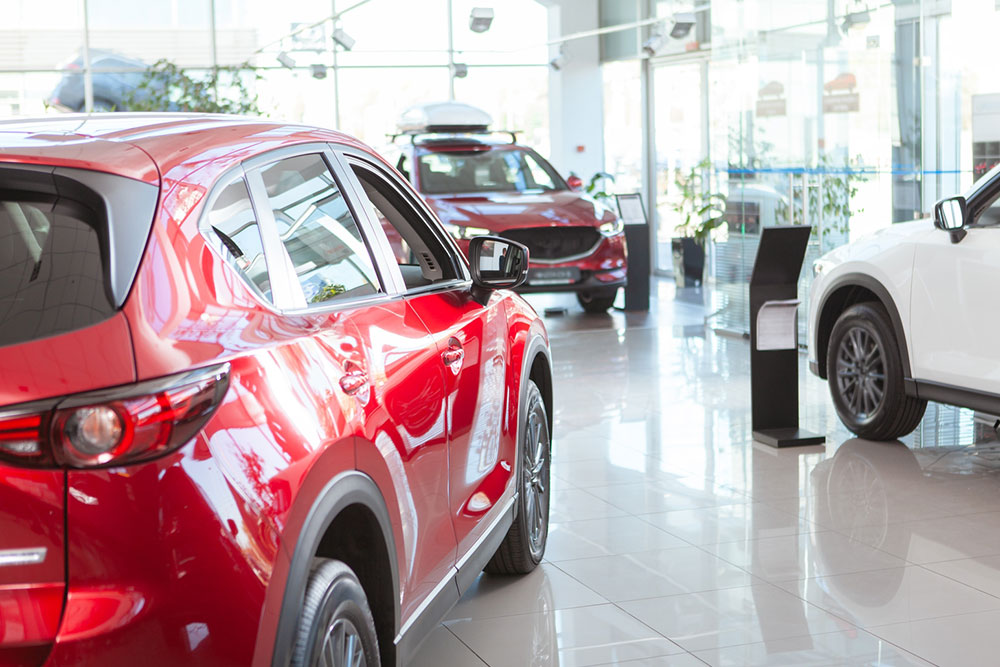Top 4 Options for Financing an SUV
Owning an SUV offers numerous advantages. Whether an individual needs it for road trips, commuting to work, or just for ample space to stash luggage or groceries, an SUV significantly enhances daily life. But purchasing an SUV, whether new or used, can be expensive since most models cost over a few thousand euros.

Common SUV financing options
There are four options for financing an SUV, including the classic credit-based loan, standard dealership financing, balloon credit financing, and three-way financing.
1. Classic credit-based loans
This is one of the simplest ways to finance an SUV purchase. One can take a credit-based loan for a new car or a pre-owned automobile. The loan amount depends on one’s borrowing capacity, credit score, and income. For those looking for SUV financing without credit checks, it would be helpful to directly enquire with a bank or financial institution that offers car loans. Usually, standard credit-based loans also take into account guarantees and insurance. These are usually collateral to pledge to the bank as a security against the loan. The collateral is generally the SUV for which the loan has been taken. Once this is done, the loan amount is directly paid to the car dealership from where the SUV is being purchased. A benefit of buying an SUV through such loans is that one directly owns the vehicle as long as the entire loan is paid off on time.
2. Standard dealership financing
Most car dealerships offer this type of financing. Here, one needs to pay a down payment, which can be any percentage of the total cost of the SUV. One can choose the size of the deposit or down payment they want to put down right before purchasing the vehicle. Then, the rest of the SUV’s cost can be paid out in installments through the subsequent months. The size of these installments depends on how much down payment one has chosen to pay. If the down payment is a significant percentage of the total cost of the SUV, the installments are smaller, and vice versa. The dealership has contracts in place that determine the duration of the financing and the interest rate, which is usually fixed. With standard dealership financing, one can have an auto financing option, which enables better financial plans for other expenses and investments.
3. Balloon credit financing
A balloon payment involves paying a loan across a series of small monthly installments and then a large sum towards the end of the loan period. Those who do not want the hassle of committing to long-term loans usually prefer balloon credit financing. This payment option is usually offered by car dealerships. It does not require any down payment. Instead, the customer pays a large amount at the end of the loan term. The monthly installments are usually lower than those in the standard dealership financing packages. Based on one’s long-term and short-term financial plans and liquidity situations, one can choose to pay the entire balloon amount at the end or take further financial assistance to pay off the final payment.
4. Three-way financing
This option is viable for those who are not sure whether they would like to keep the SUV when their dealership contract ends. Sometimes, dealerships also offer these options at the end of the financing contract-
- The SUV is returned to the dealership to settle the loan.
- The term of the loan contract is extended.
- Pay the balloon payment specified in the contract to own the car finally.
Leasing
Apart from the various financing options from banks and dealerships, one can also opt for car leasing. With leasing, one only has to pay a monthly payment based on an agreement or contract. The contract is typically two to four years long. Besides this, there are various leasing structures available. For example, mileage leasing involves paying a fixed monthly amount based on the expected mileage during the leasing period.
In addition to this, there is the option for residual value leasing. In this option, the amount to be paid is calculated based on the expected worth of the car at the end of the lease period. At the end of the lease period, the car has to be returned to the original owner or lessor. Most people opt for leasing since the average spend is less than one would have spent while purchasing a car.
Benefits of leasing
Along with the overall low cost compared to car purchases, leasing has several other advantages.
- The monthly payment is generally less than other standard financing options, such as dealership financing or bank loans.
- One can lease the latest SUV model from any manufacturer and exchange it later for a newer model at the end of the lease period.
- Self-employed people who have taken a car on lease for work purposes can get tax rebates on the lease installments. But the tax benefits are not applicable if the car is used for personal purposes.
- In the case of mileage leasing, if the car is driven for less mileage than the total mileage specified in the lease agreement, the customer may get some percentage of the money back at the end of the lease period.











